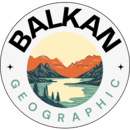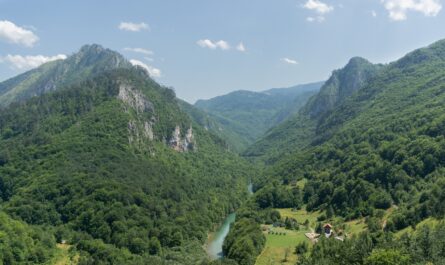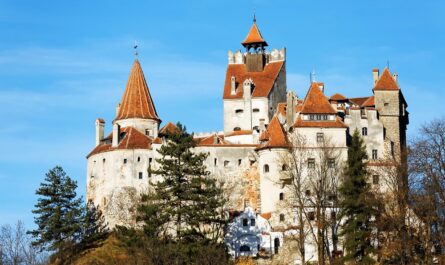The Balkan Peninsula, a region steeped in history and diversity, is home to a vibrant tapestry of cultural expressions. Among the many facets that define the Balkans, its folklore stands out as a captivating mosaic of music, dance, and tradition. In this exploration, we dive into the heart of Balkan folklore, uncovering the melodies that echo through time, the dances that tell stories, and the rich tapestry of traditions that bind communities together.
I. The Melodious Heartbeat: Balkan Folk Music
Balkan folk music is a symphony that captures the essence of the region’s diverse cultures. From the soulful melodies of Greece to the spirited tunes of Serbia, each nation contributes to this musical kaleidoscope. Instruments like the accordion, bouzouki, and tamburitza create a rich, layered sound that resonates with the historical echoes of the Balkans.
One of the defining features of Balkan folk music is its use of irregular time signatures. The intricate rhythms and shifting meters reflect the complex history of the region, where diverse influences have converged and left their mark on the musical landscape. The hauntingly beautiful vocal styles, often characterized by intricate ornamentation, add another layer to the enchanting tapestry of Balkan music.
II. Dance as Cultural Expression: Spirited Rhythms of the Balkans
Balkan dance is a celebration of life, a rhythmic expression that bridges generations and communities. Each dance tells a story, conveying the joys, sorrows, and traditions of the people. The intricate footwork, vibrant costumes, and dynamic formations make Balkan dances a captivating spectacle.
The “kolo” dance, a circle dance that symbolizes unity and community, is a common thread that binds Balkan nations together. As dancers move in harmony, the circle becomes a symbol of continuity and shared identity. Other dances, like the fiery “zeibekiko” of Greece or the lively “oro” of Macedonia, showcase the diversity within the region while highlighting the common threads that connect Balkan communities.
III. Traditions Woven in Time: Keeping the Flame Alive
Balkan folklore is not just about music and dance; it is a living tapestry of traditions passed down through generations. From the intricate craftsmanship of traditional costumes to the storytelling in folk tales, the Balkans maintain a deep connection to their roots.
Weddings, festivals, and other cultural events provide a stage for the display of these traditions. Intricate rituals, symbolic gestures, and the sharing of traditional foods create a sense of continuity, reminding people of their cultural heritage. The preservation of these traditions becomes a communal effort, ensuring that the flame of Balkan folklore continues to burn brightly.
IV. Challenges and Resilience: Navigating the Modern Landscape
In the face of modernization and globalization, Balkan folklore faces challenges to its preservation. Yet, it is the resilience of the people that ensures the survival of these cultural treasures. Organizations, festivals, and passionate individuals work tirelessly to promote and safeguard Balkan folklore, recognizing its importance as a source of identity and pride.
V. The Intricacies of Balkan Folk Instruments: Echoes of Tradition
Balkan folk music draws its unique flavor from a diverse array of traditional instruments, each with its own story and significance. The accordion, with its soulful wheezing, and the bouzouki, with its distinct twang, create a melodic conversation that spans generations. The tamburitza, a string instrument with variations across the Balkans, adds a rhythmic richness that complements the intricate dance patterns.
These instruments not only serve as vessels for musical expression but also embody the craftsmanship and artistry of generations past. Many are handcrafted, carrying the history of their makers within the grain of their wood. As technology advances, there is a delicate balance between preserving the authenticity of these instruments and exploring new possibilities in sound.
VI. Diaspora and Cultural Exchange: Balkan Folklore Across Borders
Balkan folklore is not confined to the geographical boundaries of the peninsula; it has traveled far and wide, carried by waves of migration and diaspora communities. In distant lands, the sounds of Balkan music find new homes, blending with other influences and creating unique fusions.
Diaspora communities play a crucial role in preserving and promoting Balkan folklore. Through music festivals, dance workshops, and cultural events, they bridge the gap between the old world and the new. The exchange of traditions between the homeland and diaspora communities contributes to the evolution of Balkan folklore, demonstrating its adaptability and enduring appeal.
VII. Contemporary Expressions: Balkan Folklore in the 21st Century
Balkan folklore is not frozen in time; it evolves and adapts to the contemporary world. Today, modern artists and musicians draw inspiration from traditional Balkan sounds, creating innovative fusions that resonate with global audiences. From electronic remixes of folk tunes to modern interpretations of traditional dances, the spirit of Balkan folklore lives on in new and exciting ways.
Social media platforms, streaming services, and digital collaborations have opened up new avenues for the global dissemination of Balkan folklore. Artists can now connect with audiences worldwide, ensuring that the rich cultural heritage of the Balkans remains relevant and appreciated in the digital age.
VIII. Festivals as Cultural Pilgrimages: Celebrating Balkan Folklore Together
Balkan folklore comes alive in a kaleidoscope of colors, sounds, and movements during traditional festivals that dot the calendar across the region. These events serve as cultural pilgrimages, drawing both locals and enthusiasts from around the world to immerse themselves in the vibrancy of Balkan traditions.
Festivals like the Guča Trumpet Festival in Serbia, the Florilege Vocal de Tours in Bulgaria, or the Koprivshtitsa National Folklore Festival in Bulgaria, are just a few examples of the many gatherings that pay homage to the richness of Balkan folklore. Here, music and dance become communal experiences, transcending language barriers and creating a shared celebration of heritage.
IX. Folklore in Visual Arts: Paintings, Embroidery, and Beyond
Balkan folklore extends beyond the realms of music and dance, manifesting in the intricate visual arts that adorn traditional costumes, homes, and religious ceremonies. The vibrant colors, geometric patterns, and symbolic motifs tell stories of the land, its people, and their beliefs.
Embroidery, pottery, and paintings serve as canvases for the artistic expression of Balkan folklore. From the finely detailed patterns on a Serbian folk costume to the vivid hues of a Macedonian tapestry, these visual arts contribute to the holistic experience of Balkan culture. The fusion of music, dance, and visual arts creates a multisensory celebration that encapsulates the essence of the region.
X. Bridging Generations: Passing Down the Flame of Balkan Folklore
In the heart of Balkan folklore lies the invaluable tradition of passing down cultural practices from one generation to the next. Elders become storytellers, musicians, and dance instructors, ensuring that the flame of Balkan heritage remains undiminished. The intergenerational exchange not only sustains the authenticity of the practices but also fosters a sense of belonging and continuity.
Modern educational initiatives, cultural institutions, and community-driven efforts play a crucial role in preserving and transmitting Balkan folklore to younger generations. Workshops, school programs, and mentorship opportunities provide avenues for the youth to engage actively with their cultural roots, fostering a sense of pride and identity.
Conclusion: A Symphony of Continuity and Change
In the intricate threads of music, dance, tradition, and visual arts, Balkan folklore weaves a symphony that echoes through time. It is a celebration of continuity and change, resilience and adaptation. As we gaze into the future, the vibrant hues of Balkan folklore remain steadfast, inviting us to join the dance, listen to the melodies, and embrace the rich tapestry of a cultural legacy that transcends borders and resonates with the human spirit. In doing so, we ensure that Balkan folklore continues to thrive as a dynamic force that unites, inspires, and enchants.




